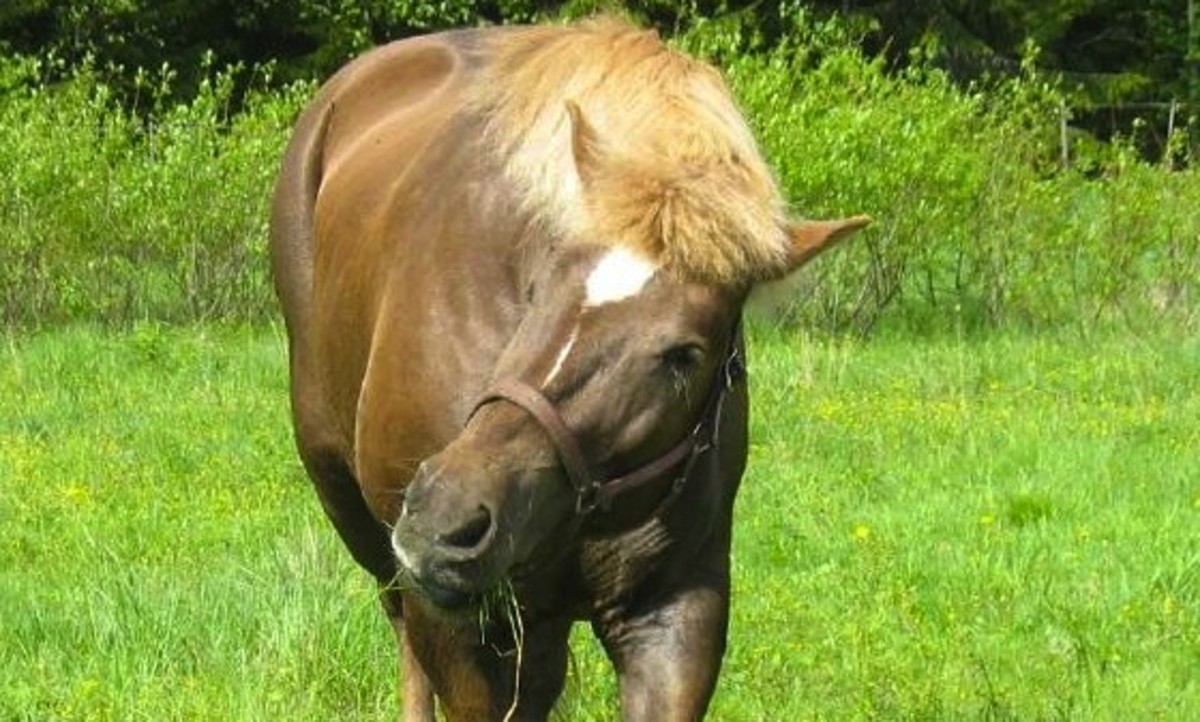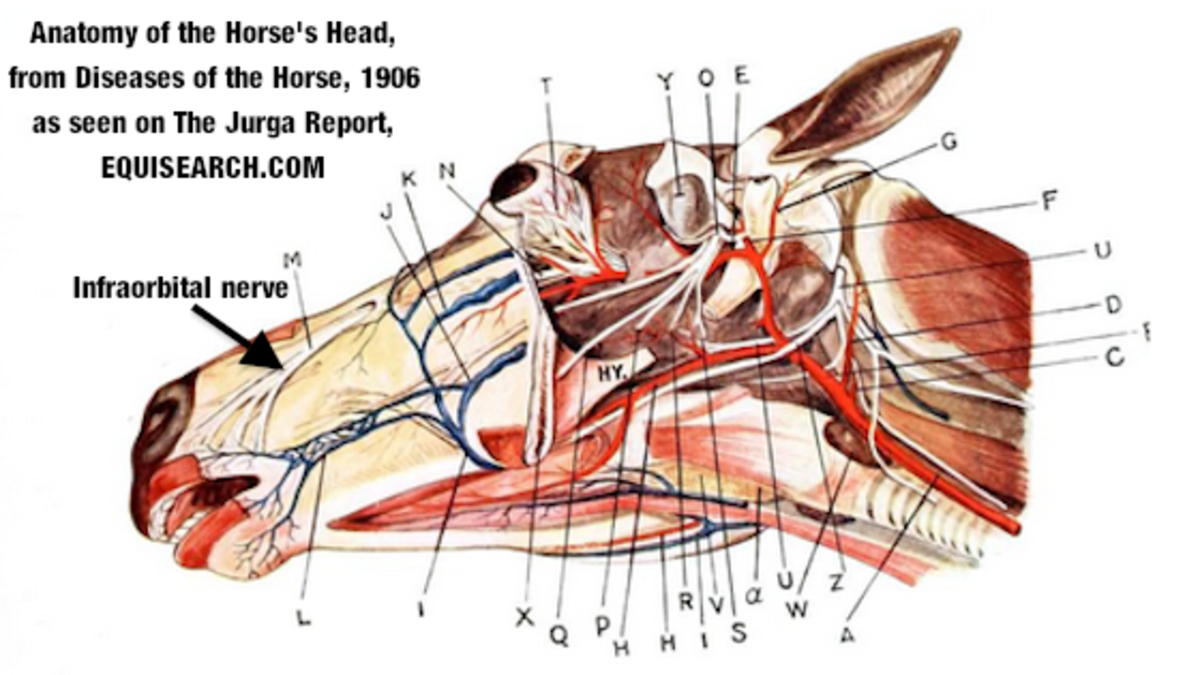Headshaking: British Researchers Tout Success of Surgical Compression of Infraorbital Nerve; Parallel Found to Trigeminal Neuralgia in Humans
- March 10, 2017
- ⎯ Fran Jurga
[VIDEOSINGLE type=”youtube” keyid=”wjAB7gJD6Dc”, width=”560″, height=”344″]
Headshaking is an equine health problem that has frustrated owners and veterinarians alike. Treatments and medications are available, but deliver varying results. Each horse seems to require delicate testing of trial options in tack, nose nets, medication supplements, therapy, and environment to find a balance that works.
But a cure? Owners just shrug. And veterinarians will tell you that the exact cause of the problem is not known.
Headshaking syndrome, for those lucky enough not to have had a horse with the condition, is when a horse shakes or jerks its head for no apparent reason. In some horses, it’s a twitch, while in others, it can be a shudder. Some horses will paw at their noses, or act like an insect has gone up a nostril. And they’ll do it over and over again.
Honing in on the striking clinical similarities that exist between facial pain syndromes in people–most notably trigeminal neuralgia–and headshaking in horses, British academics from the University of Bristol’s School of Veterinary Sciences and the University of Liverpool, evaluated the long-term success rate of a relatively new surgical procedure: Caudal compression of the infraorbital nerve involves placing platinum coils into the nerve ends within the canal to relieve the pain.
The study found this surgery could be a viable option for headshaking in horses with a long-term success rate of nearly 50 per cent. Nonetheless, researchers are continually working to find a more effective treatment method for headshaking.

Veronica Roberts, Clinical Fellow in Equine Medicine at Bristol led the latest study; she has received a grant from the British Neuropathological Society to investigate possible focal demyelination of the nerve as a cause of headshaking in horses. The reason the Bristol research team is looking for demyelination is that it is the most common cause of trigeminal neuralgia in people. The team will collaborate with Seth Love, Professor of Neuropathology in the School of Clinical Sciences, as he has carried out work in this area in people.
To find a more effective treatment and to understand the disease, Veronica is requesting that British horse owners who may be considering euthanizing a headshaking horse contact her for possible inclusion in her study.
The study, which was published in the Equine Veterinary Journal, evaluated the long-term success rate of caudal compression of the infraorbital nerve. The researchers reviewed clinical records of 58 horses that underwent this surgery between June 2004 and January 2011.
The horses, aged one to 17 years, were used for general riding, show jumping, eventing, or dressage and had a history of headshaking.

The study found:
- Surgery was initially considered a success in 35 of 57 (63 per cent) horses, but headshaking recurred between nine and 30 months later in nine horses;
- The research team repeated the surgery in ten horses;
- The overall success rate at an average follow-up time of 18 months, considering only the response to the last surgery performed, was 49 per cent;
- Owners reported nose rubbing in 30 horses at long-term follow-up after surgery;
- Nose rubbing resolved in all but four horses that were later euthanized.
Veronica Roberts said: “There are striking clinical similarities between facial pain syndromes in people, most notably trigeminal neuralgia, and headshaking in horses.
“Headshaking in horses is a major welfare issue for horses and more research is needed on the aetiopathogenesis of this pain syndrome to improve medical and surgical therapies. Headshaking is a significant cause of distress for some horses and this treatment in selected cases is needed even though the failure rate is limited.”
The researchers concluded from their study that the caudal compression procedure offers the best prognosis for a successful outcome compared with other treatments for horses where the only alternative is euthanasia. However, surgical treatment of the disorder needs to be improved together with further research into the pathogenesis of the disorder.
Reference: Caudal anaesthesia of the infraorbital nerve for diagnosis of idiopathic headshaking and caudal compression of the infraorbital nerve for its treatment, in 58 horses, V. L. H. Roberts, J. D. Perkins, E. Sk?rlina, D. A. Gorvy, W. H. Tremaine, A. Williams, S. A. McKane, I. White and D. C. Knottenbelt, Equine Veterinary Journal, September 2012, Volume 44, Issue 5.
To learn more:University of Liverpool information page on headshaking syndrome in horses.





